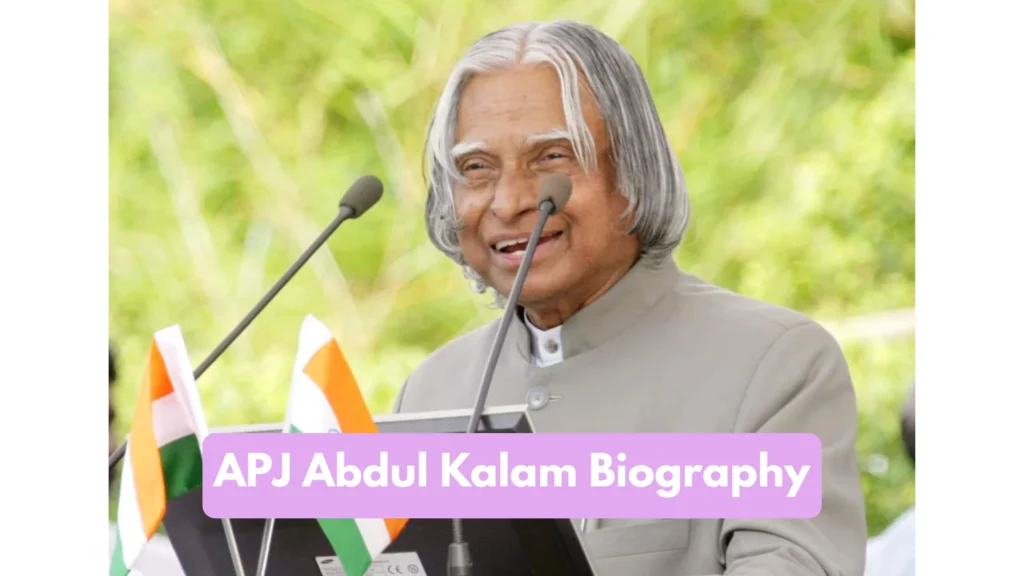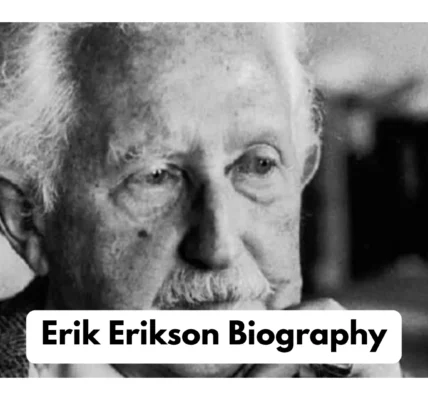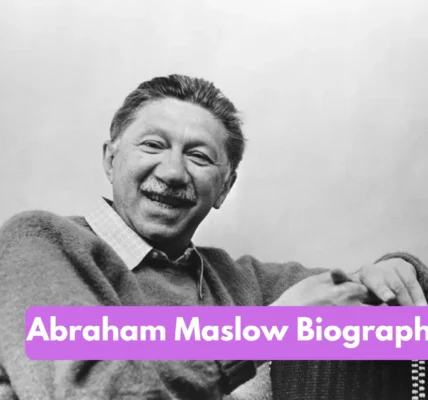
Avul Pakir Jainulabdeen Abdul Kalam, widely known as APJ Abdul Kalam, remains one of India’s most beloved and inspirational figures.
Born on October 15, 1931, in the coastal town of Rameswaram, Tamil Nadu, Kalam rose from humble beginnings to become a pioneering scientist, the “Missile Man of India,” and the nation’s 11th President (2002–2007).
His life story is a testament to humility, perseverance, and an enduring commitment to youth, education, and scientific advancement.
Early Life and Family
APJ Abdul Kalam was born into a modest family; his father, Jainulabdeen, was a boat owner, and his mother, Ashiamma, worked hard to raise the family. Kalam grew up in Rameswaram where early hardships instilled in him a strong sense of discipline and a thirst for knowledge. As a young boy, he helped his family by selling newspapers and carrying out small errands — lessons that shaped his lifelong simplicity and work ethic.
Education and Formative Years
Kalam’s academic journey began in local schools in Rameswaram and progressed to St. Joseph’s College in Tiruchirappalli, where he studied physics. He later pursued aeronautical engineering at the Madras Institute of Technology (MIT) in Chennai. It was at MIT that Kalam’s fascination with flight, rocketry, and scientific problem-solving deepened. Despite financial constraints and the odds stacked against him, his persistence and curiosity opened doors into India’s burgeoning space and defence programs.
Scientific Career: From ISRO to DRDO
Kalam’s professional career began at the Defence Research and Development Organisation (DRDO) and later at the Indian Space Research Organisation (ISRO). He played a central role in India’s early rocket programs, contributing significantly to the development of the Satellite Launch Vehicle (SLV) which successfully deployed the Rohini satellite in near-earth orbit. As Project Director of the SLV-III, Kalam’s leadership helped place India on the global space map.
Later, Kalam became a pivotal figure in India’s missile development programs. He led the Integrated Guided Missile Development Programme (IGMDP) which produced several of India’s most notable missiles, including the Agni and Prithvi series. His success in turning scientific theories into practical defence capabilities earned him the moniker “Missile Man of India.”
Leadership Roles and Government Service
Kalam’s reputation as a scientist and administrator grew steadily. He served as Chief Scientific Adviser to the Prime Minister and as Secretary of the Department of Defence Research and Development (DRDO) from 1992 until 1999. In these roles, he advocated for self-reliance in defence technologies and championed projects that strengthened India’s strategic autonomy.
Though often described as a scientist first, Kalam believed science must serve society. His work emphasized practical applications, capacity building, and nurturing young talent across the country.
The Presidency: People’s President (2002–2007)
In 2002, Kalam was elected as the 11th President of India. Unlike many who viewed the presidency as a ceremonial post, Kalam infused it with warmth, accessibility, and a relentless focus on youth empowerment. He became known as the “People’s President,” traveling extensively to interact with students, teachers, and citizens from all walks of life. His accessible demeanor, simple lifestyle, and deep respect for democratic institutions endeared him to millions.
As President, Kalam continued to champion education and innovation. He used his platform to inspire young Indians to dream big and work hard to achieve those dreams. His commitment to engaging with students—often at schools and universities—helped cement his legacy as an educator as much as a leader.
Author and Thought Leader
APJ Abdul Kalam authored several influential books that combined science, policy, and inspiration. His autobiography Wings of Fire traces his journey from a small town to the top echelons of Indian science. Other notable works include Ignited Minds, India 2020, and My Journey, which present his vision for a developed, knowledge-driven India. These books remain required reading for many students and professionals seeking insight into Kalam’s pragmatic optimism and strategic thinking.
Philosophy and Quotes
Kalam’s life philosophy was simple yet profound: value education, nurture curiosity, and remain grounded. He encouraged young people to embrace dreams and turn them into actionable goals. Two oft-quoted lines capture his message: “You have to dream before your dreams can come true” and “Dream, dream, dream. Dreams transform into thoughts and thoughts result in action.” These aphorisms reflect his belief that imagination, coupled with disciplined effort, drives progress.
Awards and Honors
- Bharat Ratna (1997)
- Padma Bhushan (1981)
- Padma Vibhushan (1990)
- Numerous honorary doctorates and international awards
Personal Life and Character
Kalam lived a life marked by simplicity and integrity. He never married and believed his work and service to the nation were his calling. Colleagues and students remember him for his humility, punctuality, and genuine interest in the well-being and education of young people. He dressed modestly, lived frugally, and maintained a rigorous daily routine centered on reading, reflection, and engagement with students.
Legacy: Inspiring Generations
APJ Abdul Kalam’s legacy extends well beyond his technical achievements. He inspired a generation of scientists, engineers, and students to pursue excellence, embrace innovation, and commit to nation-building. He popularized science through outreach and education, believing that a country’s strength lay in the dreams and capabilities of its youth.
Kalam’s vision for India—often summarized in his concept of transforming India into a knowledge superpower by 2020—continues to influence policymakers, educators, and change-makers. Schools and institutions across the nation have established awards, fellowships, and lectures in his memory, ensuring his message endures.
Continued Dedication to Education and Rural Development
Beyond his official roles, Kalam remained a dedicated educator and mentor. After completing his term as President, he returned to public life with renewed focus on teaching, writing, and interacting with young minds across India. He frequently visited engineering colleges and schools, held open-forum discussions, and encouraged students to take part in projects that used science for social good. His style of engagement—listening more than lecturing—helped countless students gain confidence and direction.
Kalam also championed rural development and inclusive growth. He promoted the idea of PURA (Providing Urban Amenities to Rural Areas), which sought to bridge the urban-rural divide by combining physical, electronic, and knowledge connectivity. His advocacy for practical solutions to India’s developmental challenges reflected a blend of scientific acumen and social empathy.
Internationally, Kalam represented India’s scientific community and values. He was invited to speak at global forums, received honorary degrees from esteemed universities, and collaborated with scholars worldwide. Despite international recognition, he remained grounded in his belief that the true measure of progress is how many people are empowered by development.
A lasting part of Kalam’s legacy is the way he personalized science and leadership. He took complex ideas and presented them in language that students could understand and use. His emphasis on ethical leadership, humility, and national service continues to inform debates on education policy and civic responsibility.
Death and Final Moments
On July 27, 2015, APJ Abdul Kalam passed away while delivering a lecture at the Indian Institute of Management Shillong. He suffered a sudden cardiac arrest and succumbed to it, leaving the nation mourning the loss of an inspiring leader who remained actively engaged with students until his final moments.
FAQs
When and where was APJ Abdul Kalam born?
He was born on October 15, 1931, in Rameswaram, Tamil Nadu, India.
What is APJ Abdul Kalam best known for?
He is best known as a pioneering aerospace scientist—nicknamed the “Missile Man of India”—and as India’s 11th President (2002–2007).
What are some of APJ Abdul Kalam’s notable books?
Notable books include Wings of Fire, Ignited Minds, India 2020, and My Journey.
Did APJ Abdul Kalam receive the Bharat Ratna?
Yes, he was awarded the Bharat Ratna in 1997.
How did APJ Abdul Kalam die?
He suffered a sudden cardiac arrest while delivering a lecture at IIM Shillong on July 27, 2015.
Conclusion
APJ Abdul Kalam’s life is a remarkable journey from modest beginnings in Rameswaram to becoming one of India’s most respected scientists and the nation’s beloved President. He combined technical brilliance with a deep commitment to education, humility, and national service. For students, leaders, and dreamers, Kalam remains a model of how curiosity, discipline, and a focus on service can shape a life that influences millions.



